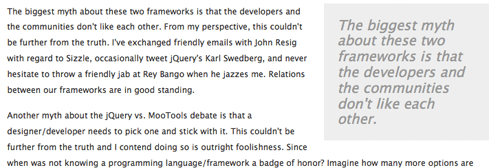Convert Fahrenheit to Celsius with JavaScript
The United States is one of the last bodies that refuses to implement the Celsius temperature standard. Why? Because we're arrogant and feel like we don't need to change. With that said, if you code for users outside the US, it's important to provide localized weather data to users. Let's took at how you can convert between Fahrenheit and Celsius.
Fahrenheit to Celsius
The formula to convert Fahrenheit to Celsius is:
°C = 5/9 x (°F - 32)
The following function converts Fahrenheit to Celsius:
function convertFahrenheitToCelsius(degrees) {
return Math.floor(5 / 9 * (degrees - 32));
}
Celsius to Fahrenheit
The formula to convert Celsius to Fahrenheit is:
°F = (°C × 9/5) + 32
The following function converts Celsius to Fahrenheit:
function convertCelsiusToFahrenheit(degrees) {
return Math.floor(degrees * (9/5) + 32);
}
Temperature conversion is one of those things that's difficult to do in your head due to the somewhat complex formula. If you have a site that reflects weather data, keep these handy functions nearby!




The reason the US (and a few other countries) don’t convert to Celsius and other metric systems has nothing to do with arrogance. Do you think that Russia is not arrogant? China? North Korea?
The reason has to do with cost-benefit analysis. How many mental, economic, medical, social, and legal changes would have to be made, as well as the corresponding costs to time and money, to allow a complete change over. Many efforts have been made to switch the US systems officially to something else and they usually fail because the general public and industry collectively decide, often subconsciously, that it isn’t worth the change.
To that note, the US is not unique. There are lots of countries that are officially on metric standards, yet still use other units in various places and contexts.
Additionally, consider time. Time is represented in base 10 units at the low levels, but then it’s base 60 for seconds, base 60 for minutes, base 24 or 12 * 2 for hours, days are sometimes base 30 (but not always), and years are base 12-ish (their size changes from year to year). There have been attempts to use decimal time all around the world, but to date, no country officially uses it. Is the world just arrogant?